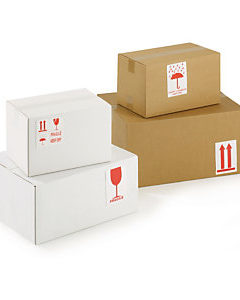One of the products that can cause a lot of problems in terms of proper packaging are paintings of various kinds. Why? Mainly because fragile canvas can get damaged during transportation. This is especially true if it is stretched on pre-prepared frames. Do you run your own studio or perhaps sell different kinds of paintings and canvases? Find out the answer to how to secure a painting in transit and how to pack a painting in transit.
What to pack a painting in for transport – types of paintings
Running your own studio or photo studio often requires you to deliver the commission to the customer. The customer usually does not have the option of personal collection and therefore cannot take full responsibility for shipping. We are well aware that when packaging the finished product, you want to ensure maximum safety so that the image arrives at its destination in pristine condition.
What types of paintings can be packed and sent by post or courier? This all depends on the service offered. Of the many designs, the most common are classic paintings painted on canvas with watercolor or oil paints. Increasingly, we also encounter finished prints prepared on stretched canvas imitating a painting. Many manufacturers have chosen to supply popular posters as well. How should a painting be packaged for shipment and should each type of decorative product be prepared in the same way?
What to pack paintings in for transport – packing products
The best way to prepare different types of paintings for shipping is to pack them in specially reinforced cardboard boxes. The products offered by RAJA are cardboard boxes of the highest quality, which can be successfully used for transport. Due to the delicate construction of paintings, it is worth considering choosing specially reinforced boxes that have been manufactured using 5 or 7 layers. This is sure to provide excellent protection from various types of mechanical damage, creasing and other factors that could adversely affect the quality of the canvas being placed.
When selecting cartons, it is necessary to consider their size. Cartons for paintings should be slightly larger than the frame itself and their width should not leave too much free space when the product is inside the packaging. This will ensure that the product does not shift during transit and is sure to arrive safely at your intended address.
How to secure the image in the packaging – products used to fill and secure
The packaging itself, although very sturdy, may not be sufficient when transporting fragile items such as paintings. To ensure maximum protection, it is a good idea to rely on the packing accessories you place in your shipment. The first of these will be protective profiles and corners that are made of soft but durable materials. These can be successfully matched to the edges of the fine canvas and applied to each edge. They are ideal for protecting wooden, plastic and metal frames, as well as canvases that have been stretched over the frame and do not require further decorating.
In addition to edge protection, it is a good idea to use the very popular bubble wrap. The latter is available in several different varieties. It is extremely important that it is prepared from durable polyethylene. This makes it resistant not only to damage, but also to moisture and various types of dirt. In addition, the bubble wrap consists of two layers that have been filled with air in the meantime. The latter perfectly absorbs all kinds of impact and provides effective protection for every packaged product.
Packing images in transit – what to look out for?
Wondering if more than one painting will fit in a single shipment? In principle, this shouldn’t be a big problem if you protect each one properly. Remember that paintings can be exposed to external damage, but they can also rub against each other in the shipment. That’s why it’s a good idea to include cardboard dividers in your shipment in addition to using specialised films. Such a solution will certainly enable the consignment to be dispatched correctly.
What to wrap the image in during shipment? The most popular solutions
If you decide to ship your painting through a shipping company, it is important that the painting is properly protected from wrinkling and damage. The packaging you choose depends on a number of factors. The main one, however, will be the format of the canvas or other material you plan to send. When looking for a suitable packaging, you can opt for:
- cardboard boxes of various sizes, which can easily accommodate paintings up to 650 × 450 × 50 mm,
- classic large cardboard boxes in which you can successfully send more than one picture. Provided, of course, that each one is sufficiently separated,
- for posters and paintings that are sent without a rigid frame, choose cardboard tubes. You can simply roll the posters up and send them to the customer so they will receive them in perfect condition.
How to pack paintings and posters in transit?
How and in what to wrap the image during transport? In addition to the cartons and protective packaging themselves, other accessories will certainly come in handy to make the packing more efficient and provide the courier with the necessary information about the value of the shipment. For this purpose it is worth buying:
– packing tape,
– self-adhesive labels,
– information and warning labels (Caution! Up/down, Fragile!),
– protective stretch film,
– decorative packaging and padding for smaller products.














